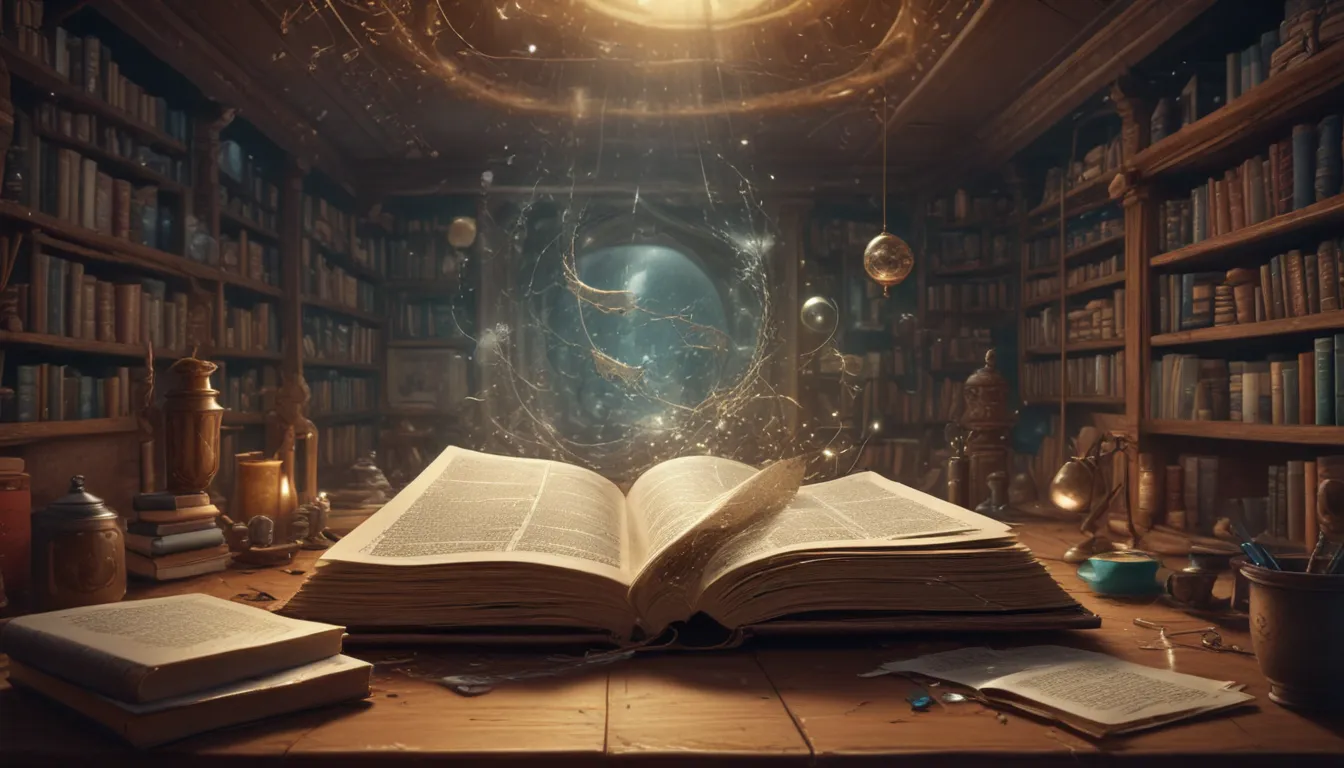A Note About Images: The images used in our articles are for illustration purposes only and may not exactly match the content. They are meant to engage readers, but the text should be relied upon for accurate information.
In a world where communication knows no bounds, the art of translation stands as a vital link between languages, cultures, and people. From ancient legends to modern technology, the field of translation is a rich tapestry of history, challenges, and significance. Whether you’re a language enthusiast or simply intrigued by the magic of words, get ready to unravel 16 captivating facts about translation that showcase its complexity and importance.
Delving Into the World of Translation
Translation is more than just a mechanical process of converting words from one language to another – it’s a gateway to understanding diverse cultures and customs. Translators act as cultural ambassadors, bridging the gap between people and societies through the power of language. They play a pivotal role in global communication, preserving literary treasures, and even safeguarding endangered languages.
Unraveling Legendary Tales: The Tower of Babel
The Tower of Babel, a legendary story from ancient times, serves as a poignant reminder of the origins of language diversity and the need for translation. According to the Bible, the construction of the tower led to the dispersion of humanity and the emergence of different languages, laying the foundation for the intricate web of translations that shape our world today.
Beyond Words: The Art of Cultural Adaptation
Translation transcends mere linguistic conversion; it delves into the intricate nuances of culture, customs, and idiomatic expressions. To effectively convey a message in another language, translators must immerse themselves in the cultural context of both the source and target languages, ensuring that the essence of the message remains intact.
Embracing Linguistic Diversity
With over 7,000 languages spoken across the globe, the demand for skilled translators and interpreters continues to grow exponentially. Each language presents its unique challenges, requiring specialized knowledge and expertise to navigate the complexities of multilingual communication effectively.
The Rise of Machine Translation
Advancements in technology have revolutionized the translation landscape, giving rise to automated tools like Google Translate powered by artificial intelligence. While these tools have made significant strides in efficiency, they still face challenges in capturing nuances and contextual nuances that human translators excel in handling.
Guardians of Literary Treasures
Through the art of translation, literary works from diverse cultures can transcend linguistic barriers and reach a global audience. Translators serve as custodians of literary heritage, capturing the essence and style of original works while adapting them to resonate with readers in different languages.
The Critical Role of Accuracy
In the realm of translation, precision is paramount. A single mistranslation, especially in legal or medical contexts, can have far-reaching consequences, leading to misunderstandings, disputes, or even posing risks to individuals. As such, meticulous attention to detail is a cornerstone of professional translation practice.
Navigating the World of Idioms
Idiomatic expressions pose a unique challenge for translators, as they often carry figurative meanings that transcend literal interpretation. Translating idioms requires a deep understanding of both languages and cultures, enabling translators to convey the intended message effectively across linguistic boundaries.
Specialization in Translation
Professional translators often specialize in specific fields such as legal, medical, technical, or literary translation. By honing their expertise in particular subject areas, translators ensure accurate and nuanced communication that meets the specialized requirements of diverse industries and sectors.
Empowering the Deaf Community
Translation extends beyond spoken and written languages to encompass sign language interpretation, which plays a vital role in facilitating communication for deaf and hard-of-hearing individuals. Sign language interpreters enable full participation in various aspects of life, bridging communication gaps and fostering inclusivity.
Embracing Career Opportunities in Translation
The translation industry presents a wealth of career prospects as the world becomes increasingly interconnected. Whether in business, literature, or international relations, the demand for skilled translators and interpreters continues to rise, offering diverse opportunities to contribute to global communication and understanding.
Tracing Translation Through History
Historical events have left an indelible mark on translation practices, shaping political, cultural, and scientific interactions. The Renaissance, for instance, fueled a surge in translating ancient texts, heralding a new era of intellectual and cultural exchange that continues to resonate in modern translation endeavors.
The Multifaceted Skillset of Translators
Contrary to popular belief, bilingual proficiency alone does not suffice to become a proficient translator. Translators must possess a deep understanding of language structures, cultural nuances, and the art of conveying meaning while preserving the essence of the original text, underscoring the complexity of the translation process.
Preserving Linguistic Heritage
Translation serves as a formidable ally in preserving endangered languages, documenting their nuances, and revitalizing linguistic treasures for future generations. By bridging linguistic divides, translators contribute to the preservation of diverse cultural heritage and the enrichment of global linguistic tapestry.
The Art of Transcreation
Transcreation emerges as a specialized form of translation tailored for marketing and advertising contexts. This creative endeavor involves adapting content and marketing messages to resonate with diverse cultures while maintaining the intended impact, underscoring the fusion of creativity, cultural sensitivity, and linguistic expertise in the realm of translation.
Embracing Evolution and Excellence
Translation is an ever-evolving process that demands continuous adaptation and improvement. Translators must stay abreast of linguistic changes, cultural shifts, and technological advancements to uphold the standards of accuracy, creativity, and cultural relevance that define the art of translation.
In Conclusion
Translation stands as a captivating realm that intertwines language, culture, and communication, transcending boundaries to forge connections between people worldwide. These 16 insights into the world of translation shed light on its intricacies, challenges, and profound impact on global understanding and unity.
As we navigate the diverse facets of translation, from the legendary origins of language diversity to the critical role of accuracy and cultural adaptation, we unveil the dynamic tapestry of a profession that serves as a beacon of integration and communication in our interconnected world.
FAQs
-
What is translation?
Translation is the process of converting text or speech from one language into another while preserving its original meaning and intent. -
What skills are required to be a translator?
Being a translator necessitates fluency in at least two languages, exceptional writing and comprehension skills, cultural awareness, and a profound understanding of the subject matter being translated. -
Can a machine replace human translators?
While machine translation tools have advanced significantly, they cannot fully replicate the nuanced understanding of idioms, cultural context, and meaning that human translators bring to the table. -
How long does it take to become a professional translator?
The journey to becoming a proficient translator varies based on factors such as language proficiency, educational background, specialized training, and practical experience. Typically, it entails several years of dedicated study and practice to master the art of translation. -
What is the role of technology in translation?
Technology plays a pivotal role in enhancing the translation process, providing tools such as computer-assisted translation (CAT) software, online dictionaries, and machine translation applications. While technology boosts efficiency, human expertise remains indispensable in ensuring accurate and nuanced translation.
Embark on a journey of discovery through the realm of translation, where language, culture, and communication converge to illuminate the power of words in fostering global understanding and connection. Join us in celebrating the art of translation, a timeless craft that transcends linguistic barriers to unite humanity in a tapestry of diversity and harmony.






